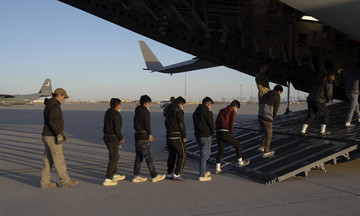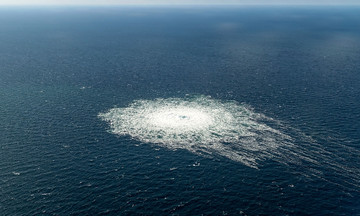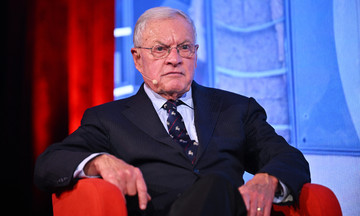On 21/7, a US air force spokesperson confirmed they were aware of and investigating a near-collision between a B-52 bomber and a SkyWest passenger plane in North Dakota a few days prior.
The B-52 reportedly appeared near the flight path of the passenger plane as it prepared to land at Minot International Airport. This forced the Embraer 175 pilots to make a sharp turn and circle to avoid a collision.
 |
A B-52 bomber takes off from Minot Air Force Base on 30/6. Photo: USAF |
A B-52 bomber takes off from Minot Air Force Base on 30/6. Photo: USAF
Minot is home to both a commercial airport and an air force base. Minot Air Force Base houses the 5th Bomb Wing and the 91st Missile Wing. It also holds a significant amount of US air force equipment, including 26 B-52 strategic bombers.
The Federal Aviation Administration (FAA) stated it was investigating the incident. The FAA emphasized that "air traffic control services at Minot Airport are handled by a private company, not FAA employees."
SkyWest has also launched an internal investigation.
Passengers on the SkyWest flight reported that the pilot apologized for the "sharp turn" taken to avoid the B-52. "This was completely unusual," the pilot said, "I don’t understand why there was no warning. The air force base has radar and they should have notified us that a B-52 was operating in the area.”
John Nance, an aviation expert and former air force reserve pilot, believes several aspects of the incident require clarification, particularly communication between the parties involved.
"If air traffic control wasn’t aware of the B-52's presence, this is a chaotic situation. They should have been informed and should have communicated with other aircraft in the area to warn them. The B-52 crew also needs to maintain communication," he said.
Coordination procedures between military and civilian aircraft operating in the same airspace are a contentious issue in the US following a collision between a passenger plane and a Black Hawk helicopter near an airport in Washington, D.C. on 29/1. This was the most serious civilian aviation accident in the US in 16 years, killing all three Black Hawk crew members and 64 people on the passenger plane.
Thanh Danh (Military, NPR, AFP)












